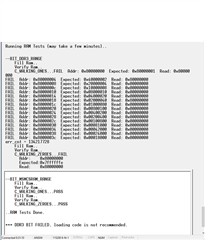We have recently begun having irregular, but recurring DSP DDR3 issues with a board designed several years ago. Upon startup self-test, the affected boards are reporting a DSP DDR3 bit error — a rather generic pass/fail message, unfortunately. While we are still digging into exactly what is causing this error to be generated, it was noticed that if either of the 0.1µF AC coupling capacitors on the DDRCLKP and DDRCLKN inputs of the DSP are momentarily probed with a standard 8pF, 500MHz oscilloscope probe, the affected boards will pass self-test and continue to operate normally — even after the probe is removed.
I have been trying to run the root cause of the problem down, but I have no previous experience with this design and the issue appears to be a subtle one since it does not affect all boards. Boards have failed both in the field and right off the production line. The components involved are:
- DSP - Texas Instruments TMS320C6678ACYPA
- DDR3 - Micron MT41K256M16HA-125AAT
- Clock generator - Texas Instruments CDCM6208V1RGZT
- DDRCLK AC coupling capacitors - 0.1µF, CHIP, 0402, X7R, 0.1UF, 10%, 16V
Replacement of one or more of these components will sometimes resolve the issue, but not always. I have looked at the supply filtering circuit for AVDDA2 on the DSP, but it follows the design recommendations and I see no obvious issues. Assistance would be appreciated!


